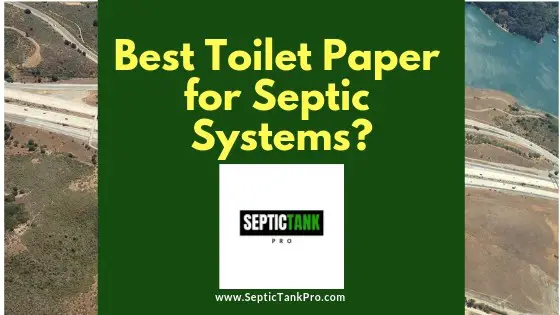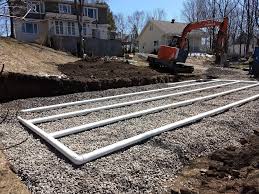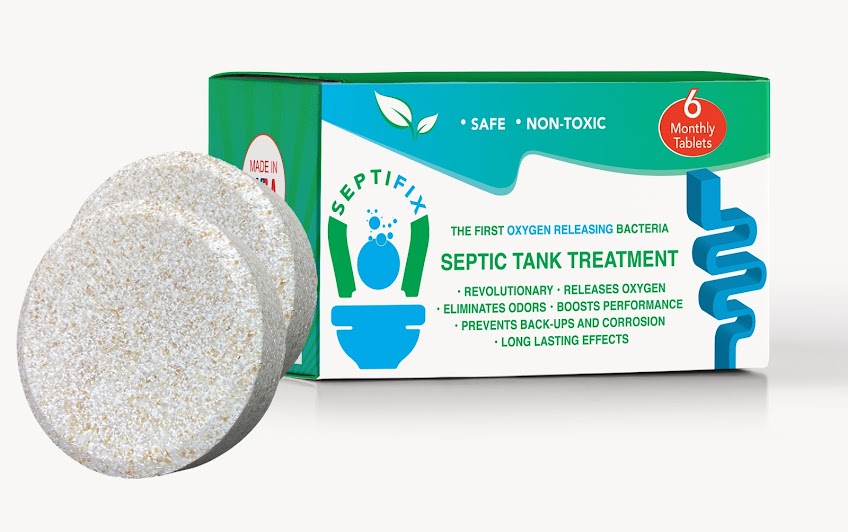The Best Toilet Paper For Septic Systems
A lot of us would typically regard toilet paper as just that: toilet paper. But finding the best septic safe toilet paper for your septic system is very important and shouldn’t be taken lightly. In this article, we will “break down” the best toilet paper options for your septic tank, and yes, pun totally intended.
So, what are the best septic-safe toilet paper options for your septic system? Here is a quick list of our best toilet paper options for your septic tank:
- Scott Rapid Dissolve
- Natural Value 100% Recycled Bathroom Tissue
- Camboo Bamboo Toilet Paper
- Cascades
- Member’s Mark Bath Tissue Ultra Premium
- Cottonelle Ultra ComfortCare Toilet Pape
- Georgia-Pacific Envision Embossed Bath
- Charmin Toilet Paper.
Continue reading this article to learn more about each of these toilet paper brands and how to choose the best one for you and your septic system.
Worried about undissolved toilet paper in your septic tank, check out SeptiFix Here. Read the full review here.
If you want to read about 7 different septic tank treatment options click here.
Scott Rapid Dissolve

- Scott Rapid Dissolve is manufactured specifically for mobile units such as RVs and boats and for on-site dedicated septic systems. Scott Rapid Dissolve toilet paper dissolves up to four times faster than conventional toilet paper. This means less of it gets into your tank, accumulating, or causing backups along the plumbing system.
- Contains 48 double rolls (6 packs of 8) = 96 regular rolls, 231 sheets per roll
- Specially made for use in RVs, boats, buses and similar applications
- Soft, absorbent sheets are gentle on skin
- Sewer-safe and septic-safe unscented bath tissue
- Packaging may vary from images shown
Prices pulled from the Amazon Product Advertising API on:
Product prices and availability are accurate as of the date/time indicated and are subject to change. Any price and availability information displayed on [relevant Amazon Site(s), as applicable] at the time of purchase will apply to the purchase of this product.
Natural Value 100% Recycled Bathroom Tissue

- This toilet tissue brand is manufactured from 100% recycled paper and contains a minimum of 80% post-consumer recycled materials. Natural Value 100% Recycled Bathroom Tissue does not contain chlorine bleach, inks, dyes, or fragrances and is certified safe for all septic tank systems.
- 100% recycled with a minimum 80% post-consumer recycled content
- No chlorine bleach
- Safe for septic systems
- No dyes, inks or fragrances
- Made in the
Prices pulled from the Amazon Product Advertising API on:
Product prices and availability are accurate as of the date/time indicated and are subject to change. Any price and availability information displayed on [relevant Amazon Site(s), as applicable] at the time of purchase will apply to the purchase of this product.
Caboo Tree-Free Bamboo Toilet Paper, Septic Safe, Biodegradable, Eco Friendly Bath Tissue with Soft, Quick Dissolving 2 Ply Sheets
- TREE FREE TOILET PAPER made from sustainable grown bamboo, a fast growing grass, making our bamboo toilet paper a sustainable, eco-friendly alternative to traditional tree based bath tissue.
- BIODEGRADABLE, SEPTIC SAFE toilet paper, safe for all disposal systems including motorhome, and marine sanitation systems. The perfect rapid dissolve rv toilet paper for campers, and boats.
- GENTLE ON SENSITIVE SKIN, our eco friendly toilet paper is hypoallergenic, BPA-free, fragrance free, paraben free, lint free, non-GMO project verified, and uses an elemental chlorine free bleaching process.
- SOFT, STRONG 2 PLY toilet paper, gives you the perfect combination of bamboos strength yet still soft fibers.
- BULK PACK OF 24 DOUBLE ROLLS with 300 sheets per rolls. Caboo toilet paper is accredited by the BRC Global Standards, FSC, ISO 14000, and is proudly panda friend
Prices pulled from the Amazon Product Advertising API on:
Product prices and availability are accurate as of the date/time indicated and are subject to change. Any price and availability information displayed on [relevant Amazon Site(s), as applicable] at the time of purchase will apply to the purchase of this product.
Cascades Toilet Paper

- Cascades is made from 100% recycled fibers. Because those fibers are very short, they break apart into minute pieces as the toilet paper dissolves in the system’s water. The tinier the pieces are, the less likely it is that they will get caught on the edges, rough spots, or corners within your septic plumbing, helping avoid clogs and back-ups.
- Soft, strong material offers reliable performance you can count on
- Individual wrapping protects from dust and debris for long-term storage
- Perfect for use in retail shops, schools, foodservice venues and more
- Designed for standard toilet roll dispensers
Prices pulled from the Amazon Product Advertising API on:
Product prices and availability are accurate as of the date/time indicated and are subject to change. Any price and availability information displayed on [relevant Amazon Site(s), as applicable] at the time of purchase will apply to the purchase of this product.
Member’s Mark Bath Tissue Ultra Premium

- This soft toilet paper is just the right thickness to do its “job”. Member’s Mark Bath Tissue Ultra Premium is soft, yet durable enough that it will not break apart when you use it. This toilet tissue brand will not clog your toilet and has been proven and tested to be completely safe for any septic tank. Comparatively, the price per roll is lower than many of the popular brands, so it offers great value, too. Countless satisfied consumers agree that Member’s Mark Bath Tissue Ultra Premium is the best toilet paper for septic tanks in the market today.
- Ultra Premium Bathroom Tissue.
- Ultimate Softness with the strength you need.
- Use less sheets to achieve a complete cleansing.
- 220 sheets per roll, 30 more than our previous product.
- Septic s
Prices pulled from the Amazon Product Advertising API on:
Product prices and availability are accurate as of the date/time indicated and are subject to change. Any price and availability information displayed on [relevant Amazon Site(s), as applicable] at the time of purchase will apply to the purchase of this product.
Cottonelle Ultra ComfortCare Toilet Paper.

- This soft and absorbent 2-ply toilet paper is comfortable and dependable to use and, more importantly, proven safe for septic systems. Cottonelle Ultra ComfortCare features a rippled texture that helps clean efficiently and is guaranteed to hold well together during use. Cottonelle Ultra ComfortCare breaks down and dissolves in water better than most other quilted toilet paper brands in the market. It is both soft and effective without being tough on your septic tank. And even though it has the feel and texture of a luxury toilet paper, it is affordable than most luxury brands. Moreover, because of its ripple texture, it accomplishes its job in less amounts, which means you can cut down on the overall amount of paper you’ll be flushing down your toilet. If you want to learn more about what makes Cottonelle Septic Safe Go here.
- 24 Family Mega Rolls of Cottonelle Ultra Comfort Toilet Paper with Cushiony CleaningRipples Texture (4 packs of 6 rolls) (24 Family Mega Rolls = 108 regular rolls*), 325 sheets per roll—packaging may vary from what is shown, unique cushiony softness available on Amazon.
- Soft, strong and effective toilet paper that uses Cushiony CleaningRipples Texture for our ultimate in comfort vs. the leading national value brand.
- Our soft, premium 2-ply toilet paper is free of added perfumes and dyes, so no need to worry about allergies or irritation.
- Sustainable solutions—made with plant-based fibers and FSC-certified, meaning we source materials that meet strict standards to protect forests and the animals and people that depend on them.
- Save big and get more with bulk toilet paper—each Family Mega Roll lasts more than 4.5x the leading brand’s regular roll, so you don’t have to change rolls as oft
Prices pulled from the Amazon Product Advertising API on:
Product prices and availability are accurate as of the date/time indicated and are subject to change. Any price and availability information displayed on [relevant Amazon Site(s), as applicable] at the time of purchase will apply to the purchase of this product.
Georgia-Pacific Envision Embossed Bathroom Tissue.

- Environmentally-conscious consumers are highly-satisfied with Georgia-Pacific Envision Bathroom Tissue. It is appreciated for its durable yet soft quality, and efficient absorbency. Georgia-Pacific’s Envision breaks down quickly and easily in your septic tank, and so you can be sure that it won’t take up much space in your tank, unlike the more bulky toilet tissue brands. Georgia-Pacific actually exceeds the Environmental Protection Agency’s guidelines for minimum post-consumer recycled fiber content in their Envision Embossed Bathroom Tissue. Believe it when it’s said that this toilet paper is not only good for your septic tank – it is also kind to our dear Mother Earth.
- TRUSTED BRAND that is recognized and loved by your tenants, guests and customers
- QUALITY softness, 2-ply thickness and a designer emboss you’d expect at home, available in individually wrapped professional packaging
- COORDINATES with Angel Soft Professional Series Facial Tissue boxes for an image-enhancing look
- SUSTAINABLE product because it contains at least 20% Post-Consumer Recycled Fiber and Meets or Exceeds EPA Comprehensive Procurement Guidelines
- SAFE for all standard sewer and septic syst
Prices pulled from the Amazon Product Advertising API on:
Product prices and availability are accurate as of the date/time indicated and are subject to change. Any price and availability information displayed on [relevant Amazon Site(s), as applicable] at the time of purchase will apply to the purchase of this product.
Charmin Toilet Paper

- Extensive tests prove that when used as intended within a properly functioning septic tank system, Charmin will not cause any plumbing problems. Charmin Toilet Paper is guaranteed to be septic-safe and it has undergone thorough tests to ensure it will settle in a septic tank and expectedly undergo natural biodegradation with no difficulty. Charmin subjects its toilet paper product to strict evaluation to ensure that it is safe, wherever it might possibly end up after flushing. This includes your drain lines, sewers, septic tanks, and even municipal wastewater treatment plants. Charmin’s manufacturer, Procter & Gamble, tests its toilet paper products in its global “flushability” lab in Cincinnati, OH. If you want to learn more about Charmin Toilet Paper- Go Here.
- Pack contains 24 Rolls (338 sheets per roll) of Charmin Ultra Soft Family Mega Roll toilet paper
- OUR UNIQUE CUSHIONY TOUCH. Available at Amazon
- Superior comfort without compromising strength.
- Charmin Family Mega Roll has plus 25% more sheets per roll vs Charmin Mega Roll
- A softer way to get clean and use less vs. the leading bargain brand
- Clog-safe and septic-safe; Roto-Rooter appro
Prices pulled from the Amazon Product Advertising API on:
Product prices and availability are accurate as of the date/time indicated and are subject to change. Any price and availability information displayed on [relevant Amazon Site(s), as applicable] at the time of purchase will apply to the purchase of this product.
Other Considerations
As a responsible home or business property owner you should on the other hand, not neglect to ask the question, “is this toilet paper safe to flush down the septic tank?” We see a number of “flushable” wipes out in the market — most of which should never really be flushed down the toilet. But more on that later. Is there toilet paper that actually works best with septic systems? What the packaging indicates may actually not hold true in reality. Hence, conducting self-tests on various toilet paper brands comes highly recommended.
It is only logical the best toilet paper for septic tanks would be those that will dissolve rapidly into very small particles when introduced into the plumbing system. This is to minimize the space it will occupy once it reaches your septic tank.
But there are other factors to consider, as well…
Biodegradable Toilet Paper
While all toilet paper will eventually break down once inside your septic tank, the biodegradable kind will require less water to facilitate its breakdown and will dissolve much faster. This makes biodegradable toilet paper a great choice for use with an on-site dedicated septic system. The only disadvantage of biodegradable toilet paper would be that they are not as soft or thick as the more luxurious alternatives, not to mention they can be a little pricier.
Recycled Toilet Paper
Recycled toilet paper will contain fewer chemicals (like bleach) that can disturb the natural bacterial balance in your septic tank. The fibers that make up recycled toilet paper are shorter and will break apart easily, allowing it to dissolve more quickly in water.
Specifically Marked Septic-Safe Toilet Paper
There are several brands of toilet paper available in the market which are marked “septic-safe.” Generally speaking, this label is intended to indicate that the toilet paper has the ability to dissolve rapidly. If you’re like many who remain skeptical of mere manufacturer labels, search for toilet papers that have been certified as “septic-safe” by the National Sanitation Foundation. The NSF is a non-profit organization that conducts product tests related to health and environmental safety.
A lot of us shop for toilet paper that are popular for being plush and/or soft. But it pays to keep in mind that the more “fluffy” toilet paper are manufactured by using newwood fibers from our trees. More environmental consumers thus opt for toilet tissue manufactured from recycled paper. Greenpeace actually recommends some toilet tissue brands as “most green”: Green Forest, 365, April Soft, Earth Friendly, Fiesta & Fiesta Green, Natural Value, Seventh Generation, and Trader Joe’s. Marcal Small Steps and Earth First are toilet paper brands that are likewise made from 100% recycled paper.
Yes, toilet paper have effects on your septic system. This is why there are certain toilet papers that are recommended, while other brands are discouraged as these could contribute to trouble with your septic system. Septic system professionals and experts tested and reviewed a number of different toilet paper types and/or brands and I have compiled here some of the top choices of toilet paper to use if you own a septic system.
DIY Septic-safe Toilet Paper Test
Admittedly, a number of us consumers would have a favorite brand or type of toilet tissue paper. If you are particularly “loyal” to a certain brand, keep in mind that there is a simple DIY test that you can conduct at home to compare between your favored and recommended brands.
- Place 4 to 5 square pieces of each toilet paper brand into a large jar or any clear container.
- Fill the first jar about ¾ with water. Cover with a lid and shake vigorously for around 10 seconds. This is to mimic what actually happens to toilet paper after it is flushed down the toilet and makes its way through the pipes and into your septic tank.
- Observe. If the toilet paper has broken down into tiny pieces, it is a good indication that it is a viable choice for your septic system.
- Repeat with all other jars with the different brands and compare the quality of breakdown.
This DIY toilet paper test is your objective comparison of how quickly and thoroughly different types of toilet paper breaks down, and should help you decide which one is best for your septic system. If different types pass the test, then it’s up to you to decide through other factors that might be consequential to you – availability, brand, comfort, cost, etc.
Related Septic Safe Questions
What You Should Not Flush Down Septic Systems
Septic tank systems have a number of maintenance requirements to keep them in good condition and properly functional. These on-site dedicated wastewater treatment facilities are unique from the traditional sewer line system provided by some municipalities. Any responsible home or business property owner needs to commit to adequately maintaining his or her septic tanks system’s needs and should know that care needs to be given to what goes into, or flushed down his or her septic tank system. Nobody would want to disrupt the natural biological process happening within septic tanks and end up with problematic clogs in the septic lines or pipes.
Foremost, the following should never be flushed in a septic tank system:
- Coffee grounds
- Disposable diapers, sanitary napkins, tampons, and the like
- Condoms
- Kitty litter
- Loose hair
- Dental floss
- Cigarette filters (or “butts”)
- Fat, grease or oil
- Paper towels or bandages
- Toxic chemicals such as paint, paint thinners, varnishes, pesticides, and other synthetic substances
Many times, common sense will tell you if something is safe to flush down your septic plumbing system or not. It is likewise as important to educate your children early on about toilet
What is bad for septic systems?
Aside from those items that should not be flushed down the toilet that were earlier discussed, monitor what you allow into your septic tank systems. Take note of the following:
- Too much water, regardless of the source, may overload your septic system. Ensure that you have functional gutters that can divert roof or rain water away from your drainfield. Install water-efficient toilets, fixtures, or appliances. Address leaky toilets and faucets promptly, and as much as possible, pace out your laundry and dishwasher loads. Remember, too, that a houseful of guests has the potential to stress your septic system, so gently ask them to avoid taking long showers and full-blast faucet use.
- Too many solids can be harmful to your septic system, too. Solid wastes accumulate as sludge layer in your septic tank. If you own a garbage disposal unit, use it only to clear out the small scraps that collect in your drain strainers. The little bits of food washed off your plate are perfectly okay to go down the drain. But if you have a large amount of leftover, it is better to dispose of it in the trash bin. Using your garbage disposal daily can have ill effects on your septic system, but occasional use lessens the likelihood of a backed-up septic tank.
- Fats and grease turn to scum layer in a septic tank. Instead of dumping these down your drains, skim off the grease and dispose into the garbage. Or bring them to a food waste recycling facility, if ever that’s available in your community. Also, think about keeping a compost pile for food waste.
- Chlorine bleach in moderate amounts can be safe for septic tank systems. But drain cleaners are a different story: these can cause more harm than help. Drain cleaners have the capacity to kill the beneficial bacteria in your septic tank, causing an inability to properly break down or digest waste. Read our article on is Bleach Safe for Your Septic Tank.
- In some cases, the salty discharge from water softeners can inflict harm on a septic system by affecting the quality of the scum layer.
- Additives that claim to break down sludge in septic tanks quicker and therefore extends the time between pump-outs are not a wise idea. Some additives have adverse side effects such as loosening the scum in the septic tank, allowing it to clog your drainfield. Having your septic tank regularly pumped is always the safer bet.
Proper Care for Septic Tanks
Your on-site dedicated septic tank system serve the same role as larger scale municipal waste treatment plants. Just that instead of staff engineers and trained technicians who keep everything operational, there’s just you, the property owner. And owning a home or business property comes with a number of responsibilities. Your septic tank system requires proper care and maintenance to keep it in good shape for years and years to come.
Inspect your septic system components regularly. Ensure that you are aware about the location of all of the components of your septic system so as to avoid inadvertently hurting them. Never drive over your drainfield. Aside from possibly breaking a pipe, the weight of a motor vehicle or heavy equipment compacts the soil and diminishes its ability to absorb water. Keep shrubs and trees adequately far away from both the septic tank and the drainfield as their roots can snake into pipes and clog them.
Have your septic system pumped periodically. Every three to five years is the recommended schedule for septic tank pumping. If you are careful about what goes down your drains, you might be able to go longer between septic service calls, yet routine inspection would still be necessary. Annual inspection is ideal. When your septic tank is empty, it is a good time to have it checked for leaks and have them fixed immediately. Also, find out about the condition of your baffles; these keep scum out of the septic inlet and outlet. If baffles are missing or deteriorated, have them replaced immediately, as well.
Submit your septic system to routine inspection. Walk across your drainfield during the rainy season. Notice if you can smell sewage or observe if grass or vegetation is especially lush in one area. These are possible indications that your drainfield could be clogged up. Call in your trusted septic repair company for inspection and advice. Annual inspections conducted by septic tank system specialists are recommended.
Whenever you flush your toilet or run your faucets, water and waste travel to your septic tank. There, solids like toilet paper sink to the bottom and contribute to the sludge layer that develops over time. Natural bacteria will decompose some of this sludge, but the accumulation is the main reason you need to have your septic tank pumped periodically. It is, of course, always best to not unnecessarily flush solid matter, including toilet paper, down the toilet to avoid clogging especially if your drain piping is small in diameter, old, poorly installed, or may have unnecessary bends or sharp angles. Septic-safe toilet paper
Read our article on how to know if your septic tank is full here.
Get Septic System Service Here
Visit our State Directory For Local Septic Service Providers
https://inspectapedia.com/septic/Toilet_Paper_Choices.php
https://www.theartofdoingstuff.com/the-only-toilet-paper-you-ever-should-buy/
https://www.homereviewed.com/best-toilet-paper-for-septic-tanks/
https://www.charmin.com/en-us/tips-and-articles/flushability
https://www.houselogic.com/organize-maintain/home-maintenance-tips/caring-for-your-septic-system/
https://www.flohawks.com/resources/septic-care-tips.asp
https://www.businessinsider.com/best-toilet-paper



















